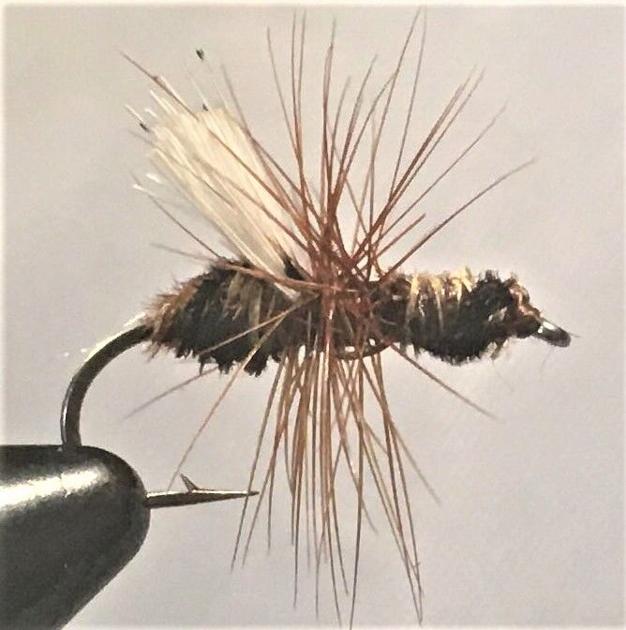It’s a sure sign of spring when you begin to see the little mounds of dirt popping up between the segments of sidewalk, evidence of ants hard at work getting active and ready for the warm weather months.
As these industrious insects ramp up their efforts for the betterment of their colonies, their adventures often take them up trees and bushes and into the grasses which line the waters of our area. Be they lakes or streams, hungry bluegills and trout await the feeding opportunity created by an untimely gust of wind that blows these bugs onto the surface, and having an ant pattern or two is always a good option when these insects are present.
The pheasant is one such option that is easy to tie, incorporates pheasant tail fibers and a few flecks from the white neck feather of a rooster as a wing, and from the hackle balancing against the body, is super effective at eliciting a take as it appears to be an easy meal stuck in the surface film of the water where terrestrials are most vulnerable. When panfish are feeding up top, it’s an unstoppable pattern, and for trout during any hatch where winged ants are taking to the sky in their breeding efforts, it’s a great one to have. All in all though, it can be used any time with a good chance of success.
MATERIALS: Hook: dry, size 16-10. Thread: brown 6/0. Abdomen: 12 PT fibers. Thorax: 8 PT fibers. Hackle: brown dry. Wing: White-tipped ring feather.
Start the fly by tying in 12 pheasant tail fibers by the tips and advance the thread to the 1/3 point of the hook shank. Wrap the fibers tightly, forming a slightly elevated bulb which represents the abdomen of the PheasAnt; tie down and trim off any excess. Select a white-tipped feather from the neck ring of a rooster pheasant and tie it by the base in so it angles over the abdomen of the fly; this will serve as the wing of the fly and allow for greater visibility as it floats on the surface and begins to sink in the film.
Over the tie-in point of the wing feather, tie a dry fly hackle in by its base, with the curvature facing forward. Then wrap the feather forward, forming the hackle which will help keep the fly afloat and battle the PT fibers’ natural absorption of the water; tie off and trim any excess about 1/3 of the hook back from the eye. Next, tie in eight PT fibers by the tips, so that the bulk of them hang off the front of the fly and advance the thread. Wrap the fibers back and forward again, forming the thorax just in front of the hackling; once complete, tie off and trim the excess PT fibers. From there, whip finish the fly and the PheasAnt is complete and ready to fish.
The battle between the PT fibers and the hackle will make the fly slowly work into the surface film and eventually just under the surface, signaling a drowning ant that would make an easy meal for the fish below. Tie a few up and have them at the ready for those breezy days when ants are blowing around, or when the males and future queens emerge for their mating rituals, and fish are sure to follow.
Credit: Source link






























